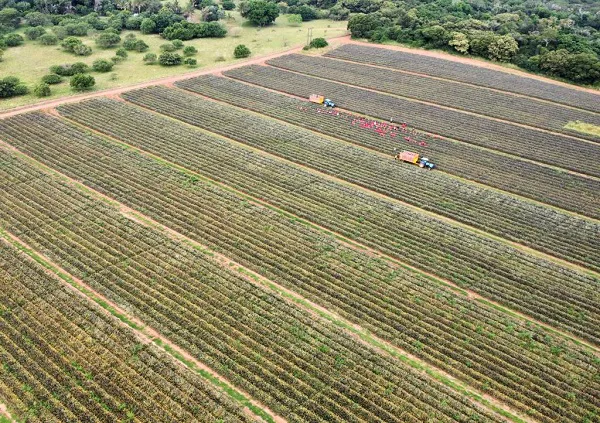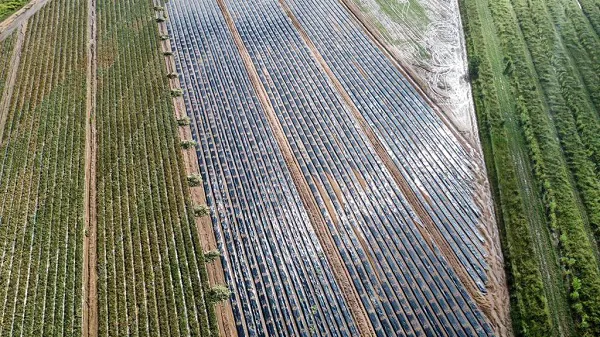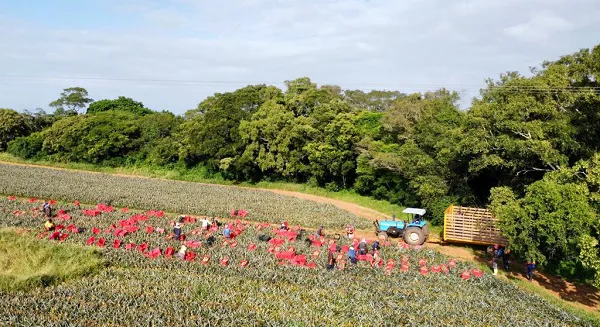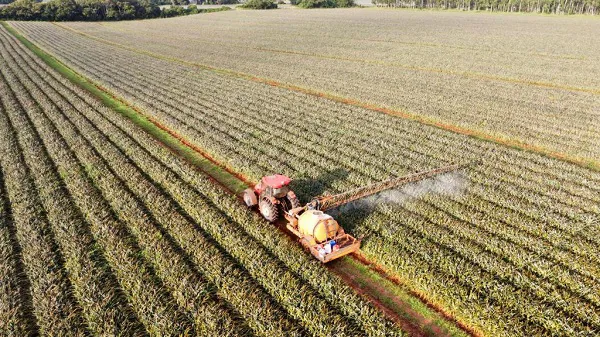A small group of KwaZulu-Natal pineapple growers supply the whole of South Africa with fresh pineapples. In Hluhluwe, Queen pineapples are produced on dryland fields for 52 weeks of the year with an average annual yield of around 47 million kg of pineapples.
“Over the past twenty years our pineapple production has almost doubled because of improved cultivation techniques,” says Josua van Straaten, chairperson of the South African Pineapple Growers’ Association. He grows pineapples on his farm Ezulwini (“in heaven” in Zulu). “Farmers are very innovative and we’ve made big strides with regards to plant density, mulching, moisture retention, fertilizer application and so forth.”
Josua notes that they are increasingly investigating the use of green crops to supplement the masses of pineapple foliage left to be re-incorporated into the soil after harvesting. An interval of four to six years – ideally even longer – between pineapple crops is followed to keep harmful nematode populations under control.
Pineapple planting
Significant losses due to sunburn
“From November onwards we usually expect heat, temperatures over 40°C, but this year it was very mild until the end of December and then in January we were hit by excessive heat. For about two weeks the sun was merciless and temperatures above 40°C on several days.”
During this period growers experienced losses of up to 50% and even more, especially on the larger fruit which are less protected by foliage, but most in demand.
“Then you also have to keep in mind that in January we also get a massive amount of natural fruiting resulting from cold in winter. We had a very cold winter, colder than usual, and consequently we’ve had a large natural crop along with the induced crop, and all of that fruit sustained heavy sunburn damage in January,” he explains.
The damage becomes apparent on fruit six weeks ahead of harvesting; through induced flowering, they are usually able to set a pre-determined sized crop through every week of the year but this year an undersupply developed in February.
 Harvesting pineapples (photos supplied by Ezulwini Pineapples)
Harvesting pineapples (photos supplied by Ezulwini Pineapples)
Negligible infrastructure damage after heavy rains
Market indications are that pineapple supply will now be picking up. As sunny weather follows the persistent rain of recent weeks, consumer demand will hopefully follow suit.
Like all of the eastern side of South Africa, there has recently been a large amount of rain, several hundreds of millimetres of rainfall during the first two weeks of February.
Josua remarks that rain didn’t cause notable infrastructure damage in the Hluhluwe area, but wet soils have been keeping them out of some lands.
“At the moment we’re struggling to get into the fields to replant. This is the time that we replant normally until the end of April, but I think this year with the rain we could be planting into May and perhaps even into June.”
Airfreight costs reduce exports
Currently only around 10% of South African pineapples are exported. Interestingly, the export market takes small fruit that are difficult to market locally, but it all has to be flown out given the short shelf life of pineapples.
“Exports used to play a bigger role. A couple of years ago it made producers good money and it was that extra cherry on the cake, but with the rise in air freight costs the emphasis has moved away from exports. It’s become very expensive and only a few farmers are still doing it.”
For more information:
Josua van Straaten
Pineapple Growers’ Association of South Africa
Email: [email protected]
